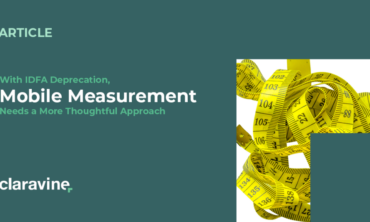Stop Fixing Your Marketing Data

Have you heard this one? “Yes, results from the marketing campaigns are coming in. We’ll have insights for the business just as soon as we’ve taken steps to clean the data….”
Waiting for the punchline? That was it. And if you’ve heard this line, the joke is on you. I hate to be the bearer of bad news, but if your organization is waiting for its data to be cleaned, it’s already too late to capitalize on whatever insights are hidden there. Data captures a moment in time — by the time you’ve cleaned this or that batch of data enough to analyze it, you end up making decisions based on a partial accounting of yesterday’s insights. Even that is a best-case scenario. It’s much more likely that you’ll be acting on partial insights from last month. or last quarter.
Stop. Stop cleaning your data.
Most marketing organizations spend immense resources cleaning data so that it can be analyzed, making it (theoretically) able to drive their business strategy. It’s a laborious process, often performed manually with spreadsheets. Maybe at some point, it was the best we could do, but today that’s no longer true. The cleaning process can handle some of the symptoms, but it can never address an organization’s core issue — a flawed and messy data collection process, one that invites all kinds of potential corruption into the mix.
It calls to mind the plight of the 19th-century war medic. Before army surgeons understood the role of microbes and the importance of sterile environments, battlefield “medicine” was usually amputation and lots of it. Even minor wounds in otherwise healthy limbs were treated this way, rather than risk the onset of infections that doctors didn’t understand and couldn’t treat.
Too often, this is what happens in the process of data “cleaning.” Whole batches of good data, and their insights are thrown out with the bad, because of ignorance about how the bad information crept in and an inability to locate and isolate it. We can do better than this — indeed, we must.
As we transition to a world in which a customer’s digital experience is managed holistically by marketers and analysts, teams will need to set up their data collection in the same way that 21st-century doctors set up for surgery. Start with a clean, sterile environment, make sure everyone in the room is a well-trained expert in their role. Arm each participant with the right tools. Most importantly, don’t let one specialist use another’s tools or interfere in another’s process.
That last point is essential for the continued health of your data/analytics organism. Everything depends on the flows of data remaining pure. This means keeping people out of places they shouldn’t be, and thus removing potential touchpoints of corruption. Suppose I’m a social media specialist, and you’re a pay-per-click specialist. Why would you and I see the exact same fields and options when we create our campaign codes? If we do, human error has an easy place to creep in. To maintain our safe, sterile data collection environment, I should see just the fields and options related to the work I’m expert in. If I see a field related to PPC, and I don’t understand it, I may leave it blank, or I may put in something that makes sense just to me — potentially compromising both your data and mine.
If both you and I are only asked to supply input around things we understand, it’s a win for both of us and for the company. It’s a step forward in controls. We’ll keep our patient healthy and we’ll be vastly more successful in producing clean, high-quality data. When the patient is healthy, the analyst’s role is simply to monitor vital signs and direct the intake and expenditure of energy.
If your team is instead spending all its time cleaning data and performing data triage, it means your patient is sick. You can keep doing what you’re doing, or you can try something new. I recommend the latter.



